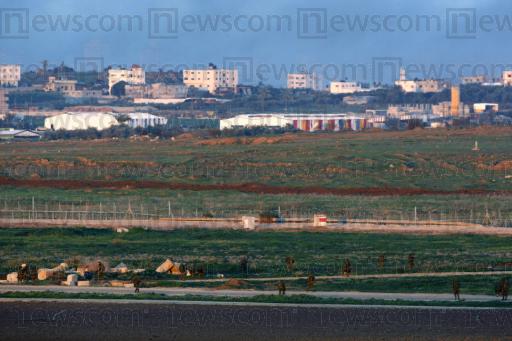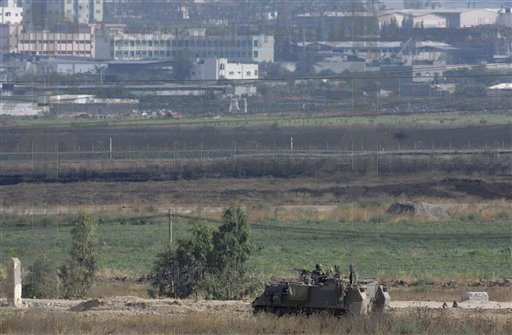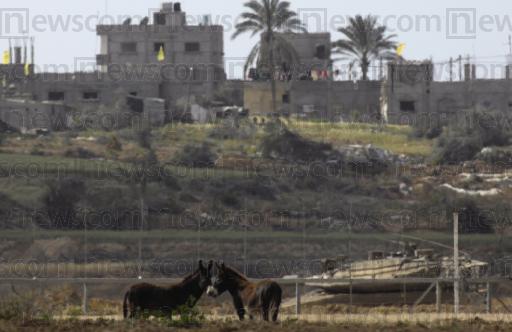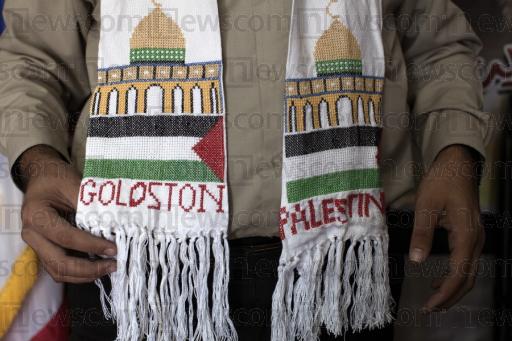President Jimmy Carter and Judge Richard Goldstone have a lot in common. Both prominent men of international standing have published hefty reports slamming Israel. Both made their arguments with countless factual errors that were exposed by critics. Both denied that their critics dealt with the substance of their reports and insisted that their detractors resorted to launching only ad hominen attacks.
For instance, Carter told an audience at the University of Georgia, “I have been called a liar. I’ve been called an anti-Semite. I’ve been called a bigot. I’ve been called a plagiarist. I’ve been called a coward. Those accusations, they concern me, but they don’t detract from the fact that the book is accurate, and that it’s needed.” Similarly, Goldstone wrote in an Op-Ed in the Jerusalem Post: “Five weeks after the release of the Report of the Fact Finding Mission on Gaza, there has been no attempt by any of its critics to come to grips with its substance. It has been fulsomely approved by those whose interests it is thought to serve and rejected by those of the opposite view. Those who attack it do so too often by making personal attacks on its authors’ motives and those who approve it rely on its authors’ reputations.”
So it’s little wonder that on Nov. 6 Jimmy Carter published an Op-Ed in the International Herald Tribune (and the Internet edition of the New York Times, as the two papers share a Web site) enthusiastically endorsing Goldstone’s report (“Goldstone and Gaza”). And it’s no surprise that this Op-Ed is riddled with factual errors.
CAMERA has requested corrections of the following five factual errors:
1) First, Carter wrote that Gaza is “surrounded by an impenetrable wall.” In fact, most of the barrier along Gaza’s 62 km land border is metal fence, not a wall. The Gaza-Egypt border is separated by a wall.
The news pages of the International Herald Tribune have consistently described the barrier between Israel and Gaza correctly, that is, as a fence (June 27, 2008; June 25, 2008; June 17, 2008; June 12, 2008; and May 24, 2008; among many others).
Following are photographs from the major wire services demonstrating that the barrier between Israel and Gaza is a fence:


Israeli soldiers patrol near the Israeli Gaza border, Monday June 08, 2009. Israeli troops battled Palestinian gunmen early Monday in a flare-up of violence along the tense frontier between Israel and Hamas-controlled Gaza. A group of around 10 gunmen were trying to cross the border fence into Israel when they were spotted by troops, according to Palestinian security officials (AP photo by Tsafrir Abayov)

An Israeli tank rolls along the border fence in Gaza across from two donkeys
standing near the Kissufim crossing March 26, 2008. Amir Cohen/Reuters
2) Second, Carter grossly exaggerated the number of Gaza homes destroyed during Cast Lead, stating: “it was difficult to understand or explain the destruction of hospitals, schools, prisons, United Nations facilities, small factories and repair shops, agricultural processing plants and almost 40,000 homes.” Yet, statistics from Palestinian sources and the United Nations contradict Carter’s claim that 40,000 homes were destroyed. Al Mazen Center for Human Rights, an anti-Israel Palestinian NGO, recently issued a report called “Cast Lead Offensive in Numbers” in which it found that 11,152 homes had been destroyed or damaged during the offensive (Table 17 and Chart 15, page 20 and Table 18, page 21). Furthermore, page 20 of the report states:
Al Mezan was able to document the destruction of, or damage to, 11,154 civilian homes (housing units) by the IOF during Operation Cast Lead. Of these, 2632 were totally destroyed (destroyed beyond repair) and 8522 were partially destroyed (i.e. assessed as repairable by Al Mezan.) The latest United Nations figures (available from UNRWA) on the destruction of civilian homes during Operation Cast Lead are as follows: 3600 homes destroyed beyond repair; 2700 homes sustained major damages; 52,000 homes sustained minor damages.
The Goldstone report, which Carter enthusiastically endorses in his Op-Ed, provides additional sources which put the number of destroyed homes at a small fraction of the amount that Carter claims. Paragraph 1238 of the report states:
Figures about the overall damage to residential housing vary according to the source and time of the measurement as well as the methodology. The human rights NGO Al Mezan reports that a total of 11,135 homes were partially or fully destroyed. According to the human rights NGO Al-Dameer-Gaza, 2,011 civilian and cultural premises were destroyed, of which 1,404 were houses that were completely demolished and 453 partially destroyed or damaged. A UNDP survey immediately after the end of military operations reported 3,354 houses completely destroyed and 11,112 partially damaged.
Even the Arab League’s report on Cast Lead cited less than a tenth of the number of destroyed homes that Carter claims. Paragraph 20 of the report claims: “Over 3,000 homes were destroyed and over 11,000 damaged.”
3) In another related falsehood, Carter claims: “Several hundred thousand homeless people suffered through last winter in a few tents, under plastic sheets, or huddled in caves dug into the debris of their former homes.” This too is utter nonsense according to Arab and U.N. statistics. As paragraph 1239 of the Goldstone report stated:
The destruction or damage of their homes forced many people to flee and find shelter with relatives or agencies providing assistance, such as UNRWA. At the height of the military operations UNRWA was providing shelter to 50,896 displaced persons in 50 shelters. This number was estimated to be a fraction of those who had become homeless, most of whom found temporary shelter with relatives.
In other words, at the peak of displacement, 60,000 people sought refuge in UNRWA shelters, which included buildings as well as tents, “plastic sheets” or “caves.” (Of those who sought shelter in places not provided by UNRWA, the majority stayed with relatives and were spared the tents, plastic sheets or caves which Carter claims housed hundreds of thousands.) And the number of displaced obviously decreased when the fighting ended. Diaa Hadid of the Associated Press wrote Nov. 9, 2009: “The U.N. estimates around 20,000 Gaza residents were made homeless by the [Cast Lead] offensive” (“U.N.: Gaza Needs Construction Material Before Winter”). Similarly, B’Tselem’s recent report on Cast Lead (“Guidelines for Israel’s Investigation into Operation Cast Lead“), stated: “Tens of thousands of persons were left homeless.” In other words, according to Goldstone, UNRWA, and B’Tselem, tens of thousands were left homeless — not “several hundred thousand,” as Carter claims. This is a very significant difference which requires correction.
4) In another factual error, Carter writes: “The Goldstone committee examined closely the cause of deaths of 1,387 Palestinians who perished. . . ” In fact, the 575-page document does not closely examine the causes of death for 1,387 Palestinian individuals. (If so, each death’s “close examination” would merit less than half a page of the report, and obviously this is not the case.) The report does not name all of the casualties, much less examine closely the circumstances of death. As Goldstone has repeatedly stated, the report chose 36 incidents to examine in detail — obvious all 1,387 reported deaths were not related to those 36 incidents.
5) Finally, Carter assertion regarding the “destruction of hospitals” earlier appeared in John Dugard’s July 23, 2009 Op-Ed. As earlier reported by CAMERA, Page 42 of the Arab League report cites a World Health Organization document which mentions damaged, but not destroyed, hospitals:
The WHO reported that during the conflict over half (15 of 27) of the hospitals in the Gaza Strip were damaged. Of the 15 hospitals damaged, nine were PMOH facilities. The Al-Wafah Rehabilitation Hospital managed by an NGO, and the Fatah General Hospital were also damaged. The Al-Quds Hospital, managed by the Palestinian Red Crescent Society was damaged severely to the extent that all of its patients were evacuated to another hospital (the Al-Shifa hospital). [Emphasis added.]
Besides WHO and the Arab League, other international and Palestinian sources also confirm that while there were damaged hospitals in the Gaza Strip, none were destroyed. The January 22-23 report by the United Nations’ Office for the Coordination of Humanitarian Affairs (“Field Update On Gaza from the Humanitarian Coordinator”) reports that four days after the cease-fire, hospitals were running at full capacity to treat the wounded. Though the OCHA report mentions repairs at Al-Quds hospital, which was also accepting patients just days after the fighting ended, it does not report that there were any destroyed hospitals. The report states:
Hospitals continue to function at full capacity as many injured patients remain hospitalized, with the result that hospitals have been unable to resume regular services such as elective surgery. Post-surgical physiotherapy is provided in Shifa hospital. Most repair work to the Al Quds Hospital in Gaza City, which was shelled on 15 January, has been completed and the facility is now functioning again.
Furthermore, the Palestine Red Crescent Society Emergency Appeal (Jan. 19, 2009) also notes damage to the Al Quds hospital, but does not report on one destroyed hospital. Outlining the overall medical situation in the Gaza Strip immediately after the fighting, the appeal states:
The heavy bombardment in the area of PRCS branch in Gaza City resulted in tremendous material loss in the Al Quds hospital, and the eight storey administrative building, which had to be evacuated and is no longer in use.
Additional Substantive Problems in Carter’s Op-Ed
The factual problems in Carter’s Op-Ed are not limited to above five points which require correction. Here are more:
1) Echoing a common media canard, Carter opens his Op-Ed by claiming that the Goldstone Report is “strongly critical of both Israel and Hamas for their violations of human rights.” As earlier noted in Snapshots, Mahoud Abu Marzook, deputy political bureau of chief of Hamas, has helpfully pointed out that in fact the report is careful not to condemn Hamas. Palestinian Ma’an News Agency reports:
Speaking on Al-Arabiya, Moussa Abu Marzouq reiterated the party’s stance on the UN-mandated Goldstone report, which says there is evidence of war crimes in the actions of Israel and Gaza factions during Israel’s Operation Cast Lead in December and January.
“It was all Palestinian factions who launched projectiles,” Abu Marzouq said, “including Fatah,” indicating that the report does not single out Hamas.
Alerted by Abu Marzook’s statement, Elder of Ziyon blogger reexamined the Goldstone Report, and found:
Sure enough, the report does everything possible not to explicitly name Hamas as being in violation of any humanitarian laws. . . . . The only recommendations in the report to “Gaza authorities” are to release political detainees and to “continue to enable the free and independent operation of Palestinian non-governmental organizations.
It’s worth reading Elder’s entire analysis, but here’s a highlight:
Going back to the section that is about Qassam rocket attacks against Israel, here is the first time the word “Hamas” is written in the body of the report, para. 1608:
On 20 April 2009, a member of Hamas called on other armed groups to stop firing rockets “in the interests of the Palestinian people”
Unbelievably, Hamas is only mentioned as a force that wants to stop rocket fire!
2) Goldstone claims: “Predictably, both the accused parties have denounced the report as biased and inaccurate.” In reality, Goldstone has become quite a hero among Palestinians. As AFP reported Nov. 4, (“Gaza Giftshop Markets ‘Goldstone’ Headscarves”):
South African Judge Richard Goldstone’s name may be infamous in Israel, but in the Gaza Strip it is sewn onto souvenir Palestinian headscarves in honour of his controversial war inquiry.
Tariq Abu Dia, owner of the President Arafat souvenir shop in Gaza City, says Goldstone, who is Jewish, deserves the honour of appearing on the iconic Palestinian keffiyeh made famous by Yasser Arafat, for whom the shop is named.
“Today we put out 50 keffiyehs made of white fabric with the Dome of the Rock in Jerusalem and the name ‘Goldstone’ embroidered on them, to honour his work,” Abu Dia says, as he shows off one of the scarves. . . .
Goldstone, a former international war crimes prosecutor, has become a celebrity of sorts for Palestinians since he authored a UN Human Rights Council report on the Gaza war in which he accused Israel of war crimes.

A number of armed men have seized on Tuesday a Jordanian aid convoy after entering the Gaza Strip via Karem Abu Salem Crossing Point, Petra was informed
The aid convoy, which was sent by the Jordan Hashemite Charity Organization (JHCO), was unloaded to non-Jordanian trucks driven by non-Jordanian drivers after crossing King Hussein Bridge.
The UNRWA was expected to receive the convoy and unload it into its warehouses in Gaza to be distributed later on civilians in the strip.
The armed men opened fire at drivers after crossing Karem Abu Salem crossing point and forced them to head to their own warehouses.
UNRWA has asked the transport company not to send the aid convoys scheduled for Tuesday and Wednesday until the issue of the seized convoy is solved.
